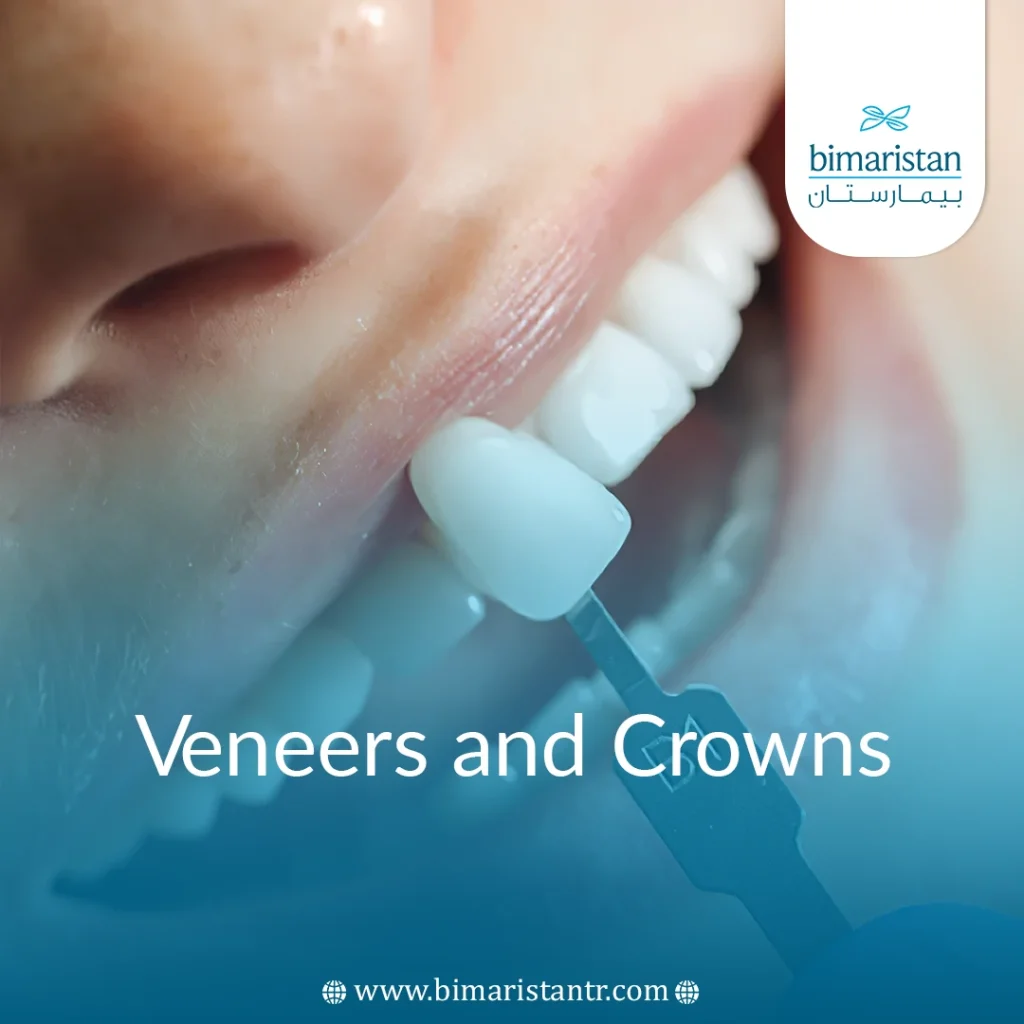Dental veneers are an effective and popular solution to improve the appearance and function of damaged or missing teeth. In Turkey, dental veneers are very popular among local and international patients due to the high quality of medical services and affordable costs compared to other countries.
Dental veneers and crowns types vary significantly based on the materials and techniques employed, influencing both the cost and final results.
In this article, we will explore the various dental veneers and crowns types available in Turkey, examining their benefits, disadvantages, and associated costs. This comprehensive review aims to help readers make informed decisions that align with their health and financial needs.
Dental Veneers vs. Crowns: What are the best types of dental veneers?
Veneers and crowns are dental restorations that can improve the appearance and function of your teeth.
The main difference is that a veneer only covers the tooth’s front and sometimes the back, while a crown covers the entire tooth.
Dental restorative procedures are costly and irreversible for the teeth you’ll have for the rest of your life, so knowing which one might be best for you is important.
Although the procedures are different, both have good success rates.
Here’s a look at the difference between the different types of dental veneers, their advantages and disadvantages, and how to use them.
What is the difference between veneers and crowns in dental veneers in Turkey?
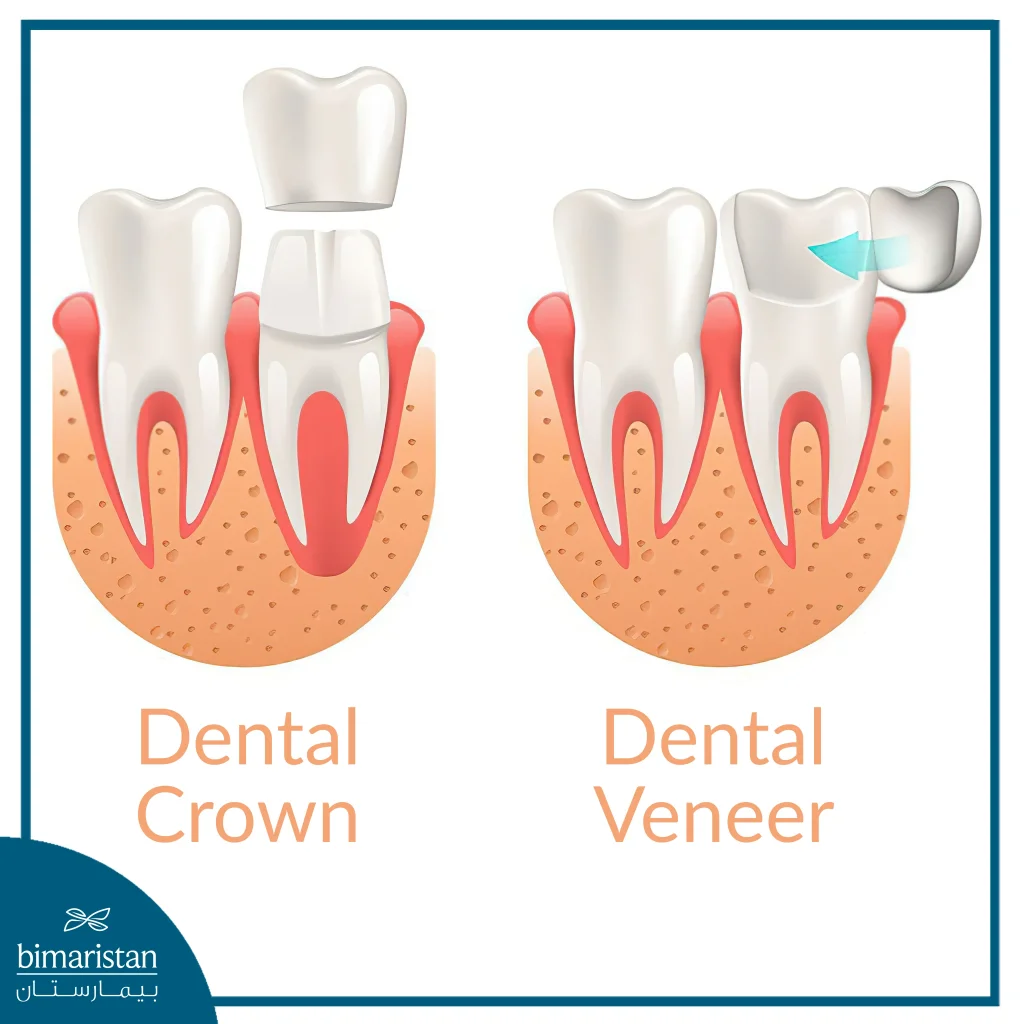
The most popular types of dental veneers are veneers and crowns.
A veneer is a very thin layer of porcelain or other material, about 1 millimeter (mm) thick, bonded to the front of your tooth; it can be as thin as 0.5 mm thick, as with Lumineers.
The crown is thicker, about 2 mm thick, and covers the entire tooth.
They can be all porcelain, fused to PFM metal alloy, all-metal alloy, or zircon.
Whether a veneer or crown is right for you will depend entirely on the condition of your teeth and what you’re trying to fix:
- Deformed teeth
- Chipped, cracked, or broken teeth
- Decayed or weak teeth
- crooked teeth
- or healthy teeth
Crowns and veneers are color-matched to your teeth, except all-metal crowns.
What is Emax Veneer, and what is Lumineers?
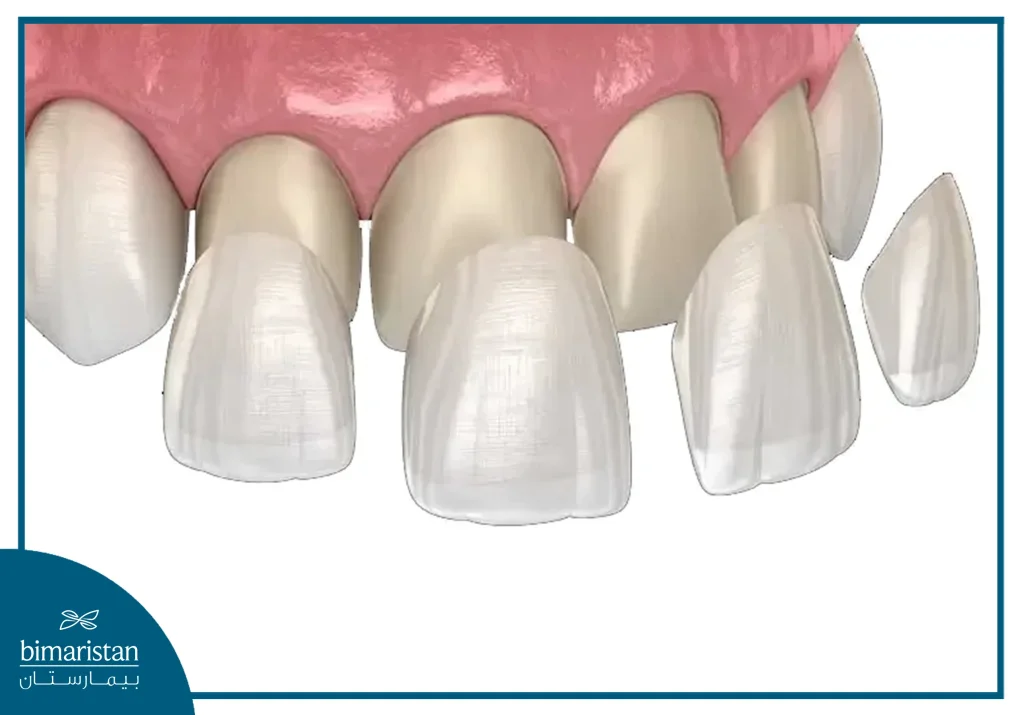
The most popular dental veneers and crowns types are veneers and lumineers.
Veneers only cover the front surface of your teeth. They are not as thick as dental crowns, leaving more of your original teeth intact.
About half a millimeter of enamel on the front of the tooth is dissolved or peeled off to strengthen the surface for veneer placement.
Some newer types of veneers don’t need as much tooth surface grinding.
You may need a local anesthetic for this, as thawing can be painful.
For veneers to work properly, your teeth must have enough enamel for the veneer to adhere to.
What are the preparations for getting veneers?
The dentist will take an impression of your teeth by scanning/digitizing them or using molds.
The image or template will be sent to the lab.
Depending on the amount of trimming or scaling of the tooth, a temporary veneer will be placed on the tooth until the new tooth is ready.
When the veneers are ready, permanent veneers will replace the temporary ones. They will be bonded to the teeth with a special cement and UV light.
There is usually minimal tooth movement after the veneer is in place.
However, if you grind or clench your teeth at night, you may need to wear a night guard to protect your veneers.
What is the Crown?
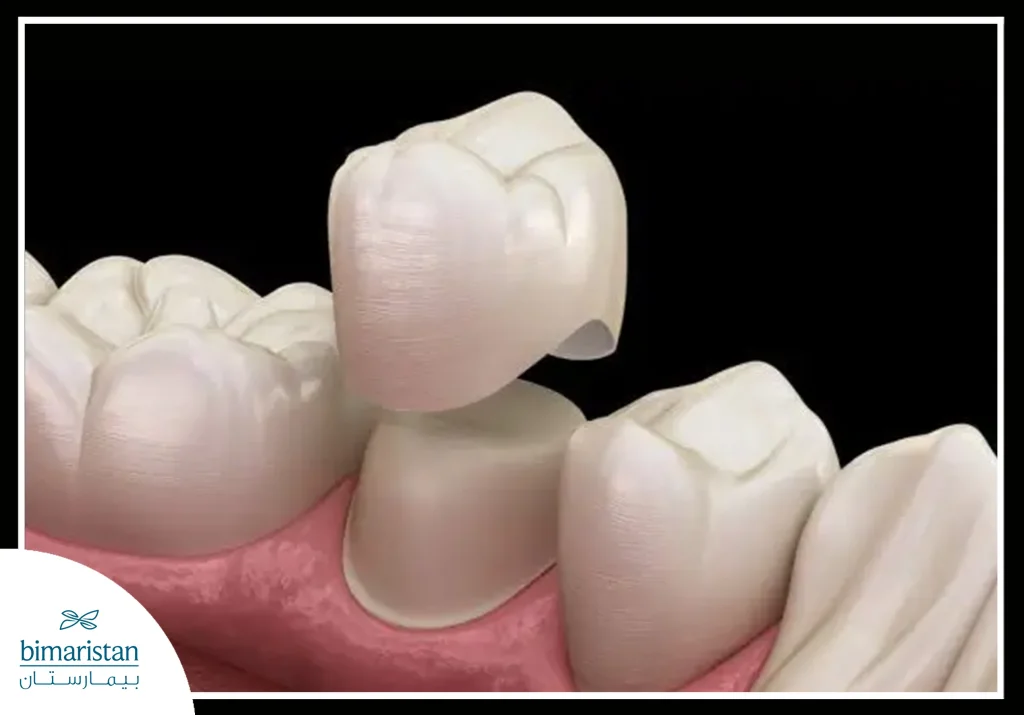
The tooth must be further dissolved or ground when the crown is placed to prepare for crown placement.
If you have tooth decay, your dentist will remove the damaged part of the tooth before making the crown.
In this case, your tooth may need to be built up to support the crown.
Your tooth may also need to be built up if it is damaged
Your dentist will choose between dental veneers and crowns types depending on the condition of your teeth.
What are the steps to get a zircon or porcelain crown?
Your dentist will take an impression of your teeth by scanning them digitally or making a mold.
The image or mold will be sent to the lab for crown fabrication.
Your dentist may place a temporary crown on your dissolved tooth so that you can use your tooth while the permanent crown is being made.
A permanent ceramic crown can now be placed directly on patients on the same day using a 3D printer called Cerec, which creates a tooth shape that closely resembles a natural tooth.
When the permanent crown is ready, your dentist will remove the temporary crown. Then, he or she will place the permanent crown on your tooth, adjust it to fit properly, and ensure your bite is correct.
Then, he or she will cement the new crown in place.
Teeth with crowns may have some movement, which may change your bite. If this happens, you’ll need to adjust the crown again.
How do you know which type of dental veneers are best for you?
If your tooth has a large filling, is chiseled, too worn, or cracked, a crown is likely the best option.
If your tooth is essentially healthy and the restoration is cosmetic, veneers may be the best option.
Veneers can also be used for minor shape correction.
How much do they cost?
The cost varies depending on the choice between dental veneers and crowns types. Veneers and crowns can be expensive.
Costs vary depending on the size of the tooth and its location in the mouth, as well as the type of veneers used and where they originate.
The cost of veneers is generally between $100 and $200 per tooth, and as with laminates, the thinner or thinner the veneer, the higher the price.
According to the Consumer Guide to Dentistry, porcelain veneers are more expensive than composite veneers, but they last longer. Composite veneers range from $150 to $250 per tooth.
Dental crown inlays
The cost of a crown varies depending on the material used, the amount of preparatory work needed, and the size of the tooth.
According to the Dental Price Guide, crowns can cost from $75 to $120 per tooth. This figure does not include other procedures, such as pulp buildup or root canal treatment, that may be required before a crown is made.
Porcelain and ceramic crowns tend to be slightly more expensive than all-metal crowns.
Types of crowns according to the types of materials used
- Crowns made of metal
- Dental crowns made of gold
- Porcelain crowns can be porcelain or ceramic
- Solid zirconium crowns made of Zirconia
- As well as e-max crowns
Pros and Cons of Veneers and Crowns
Pros of dental veneers
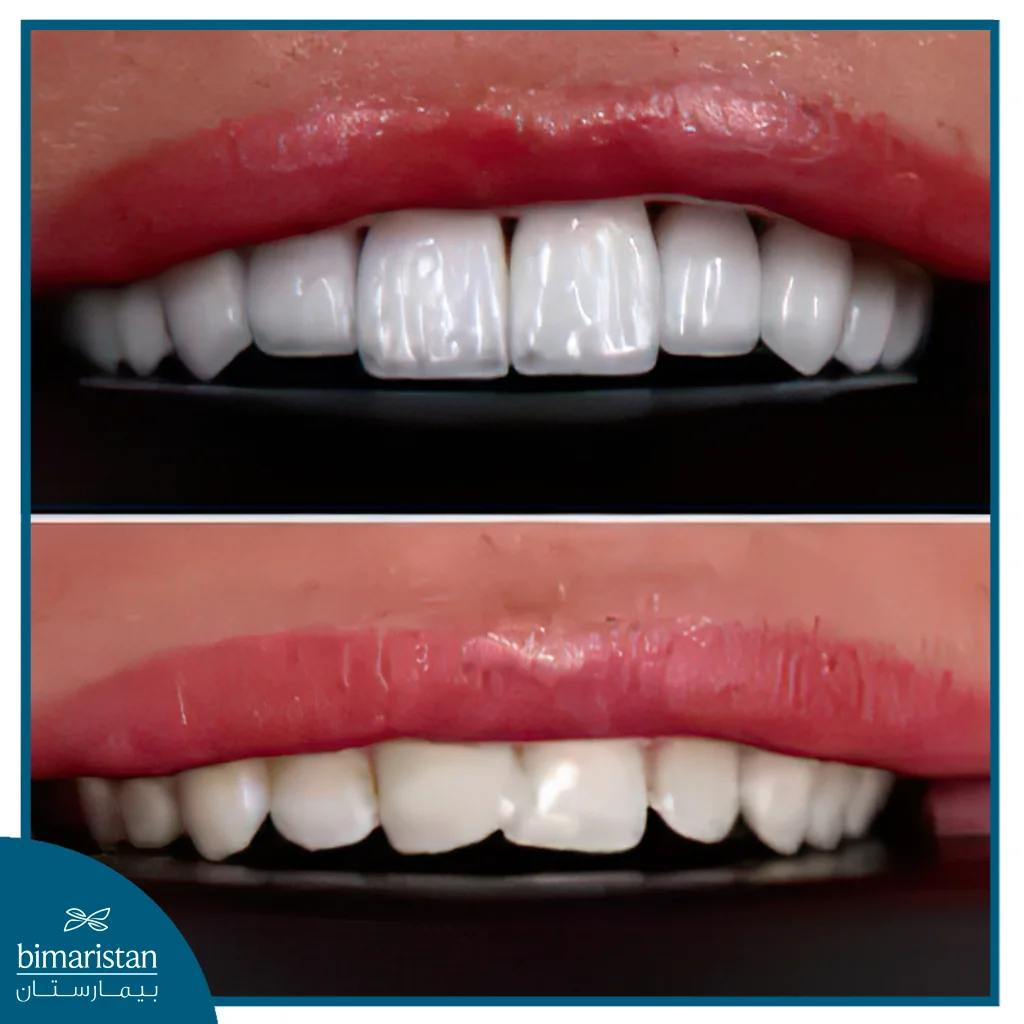
They may be more aesthetically pleasing than crowns in the long run because they don’t show gum margins after several years, as sometimes happens with crowns.
Dental veneers don’t require much dissolving of the teeth, so more of your natural teeth remain healthy.
The better the quality of the veneer, the less the melting process will be, as in Lumineers, which are the thinnest of the veneers.
Cons of dental veneers
Dental veneers leave more areas of the tooth vulnerable to new decay.
Composite veneers cost less but may only last 5 to 7 years.
Other materials last longer but may need to be replaced after several years.
Placing veneers is an irreversible process.
Pros of crown molding
Every tooth is covered, so your tooth is more protected from decay.
Porcelain crowns look like your natural teeth.
Pay attention to the quality of the crowns used, as some commercial centers use some types that completely destroy the vitality of the teeth. As in the attached picture.
Crowns are relatively permanent and do not need to be removed for cleaning as dentures do.
Cons of crown molding
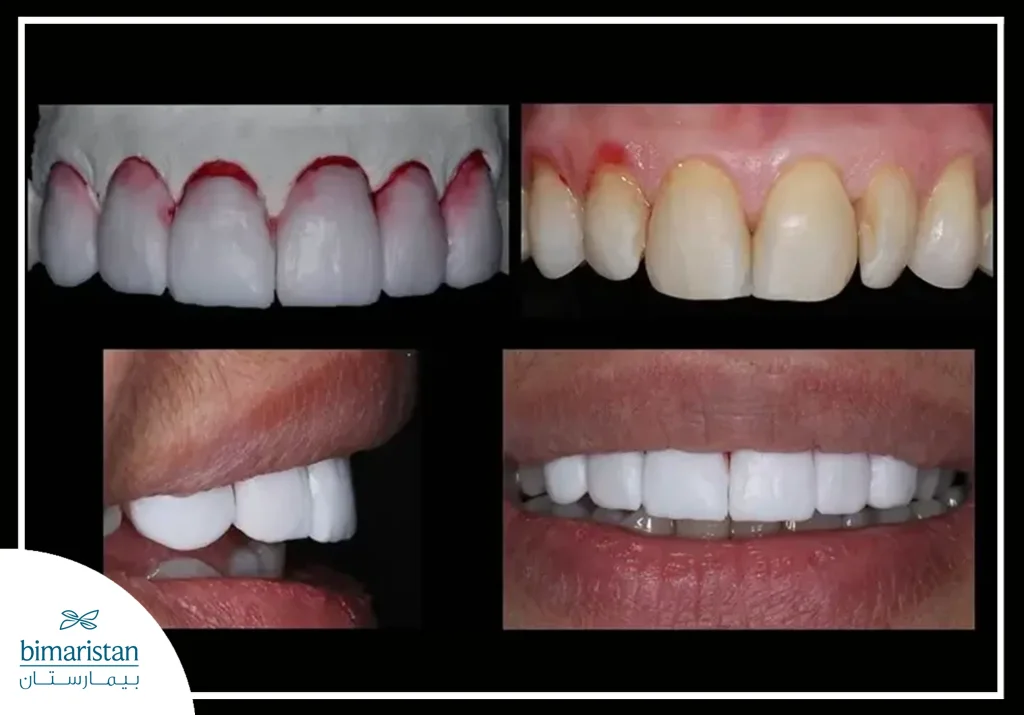
More of your natural tooth mass is removed to make room for the crown.
Although teeth may be protected from cavities, they need constant care because they can develop an odor if they’re not taken care of.
If the zircon teeth are of poor quality and do not contain porcelain, their vitality will not be present, as their shape and color will be bright white and plastic-like.
Your crowned tooth may be more sensitive to heat and cold initially, and you may feel sore gums.
But if the sensitivity increases, make an appointment with your dentist.
Porcelain is fragile and can be damaged over time.
Porcelain fused to the crown (PFM) shows a thin, dark line between the natural tooth and the crown.
Questions to ask your dentist during dental veneers in Turkey
You’ll first need to know the cost of a crown or veneer, and you’ll also need to know your dentist’s experience with both procedures. Find out if the dentist specializes in prosthodontics
Other questions to ask your dentist depend on your specific needs, but some questions you may want to ask include the following:
- Are there other options to consider, such as dentures or dental implants?
- How long do you expect the veneer or crown material to last?
- Will the initial cost cover subsequent visits if the crown doesn’t fit and there is a need to wear a mouthguard?
- Do you recommend any special care for the cortex or crown?
Some tips from dentists in Turkey when choosing dental veneers and crowns types
The most important thing to consider when choosing between veneers and crowns is that porcelain veneers require less tooth reduction than full-coverage crowns. They are also more aesthetically pleasing when indicated.
“The cost of veneers and crowns are similar.” Veneers are usually preferred for front (visible) teeth.
Full-coverage crowns are generally preferred over veneers if the existing tooth structure is minimal.”
Our dentist recommends asking if your dentist uses a “conservative cutting” technique when preparing teeth for veneers.
Also, since color matching is important, ask if the lab’s ceramic technicians are available to help with shade and tint selections.
Things to know when choosing between dental veneers and crowns types
Both veneers and crowns can improve your smile and the function of your teeth.
Both are expensive procedures, especially when more than one tooth is involved.
Dental veneers are used when you want cosmetic improvements, such as covering crooked or broken teeth, especially your front teeth.
Crowns are used when a tooth has a lot of decay, is broken or needs root canal treatment.
Crowns may also be more appropriate when you need to strengthen neighboring teeth.
Having regular dental checkups and practicing good dental hygiene is vital to maintaining your veneer or crown and the rest of your teeth.
At Bimaristan, we provide you with the best cosmetic and restorative dentistry centers.
You can read other topics about dental implants and clear braces in the articles on our page.
CADCAM imaging technology now allows the production of all types of dental veneers, and studies have shown that this technology significantly improves the aesthetics of teeth.
Sources:
